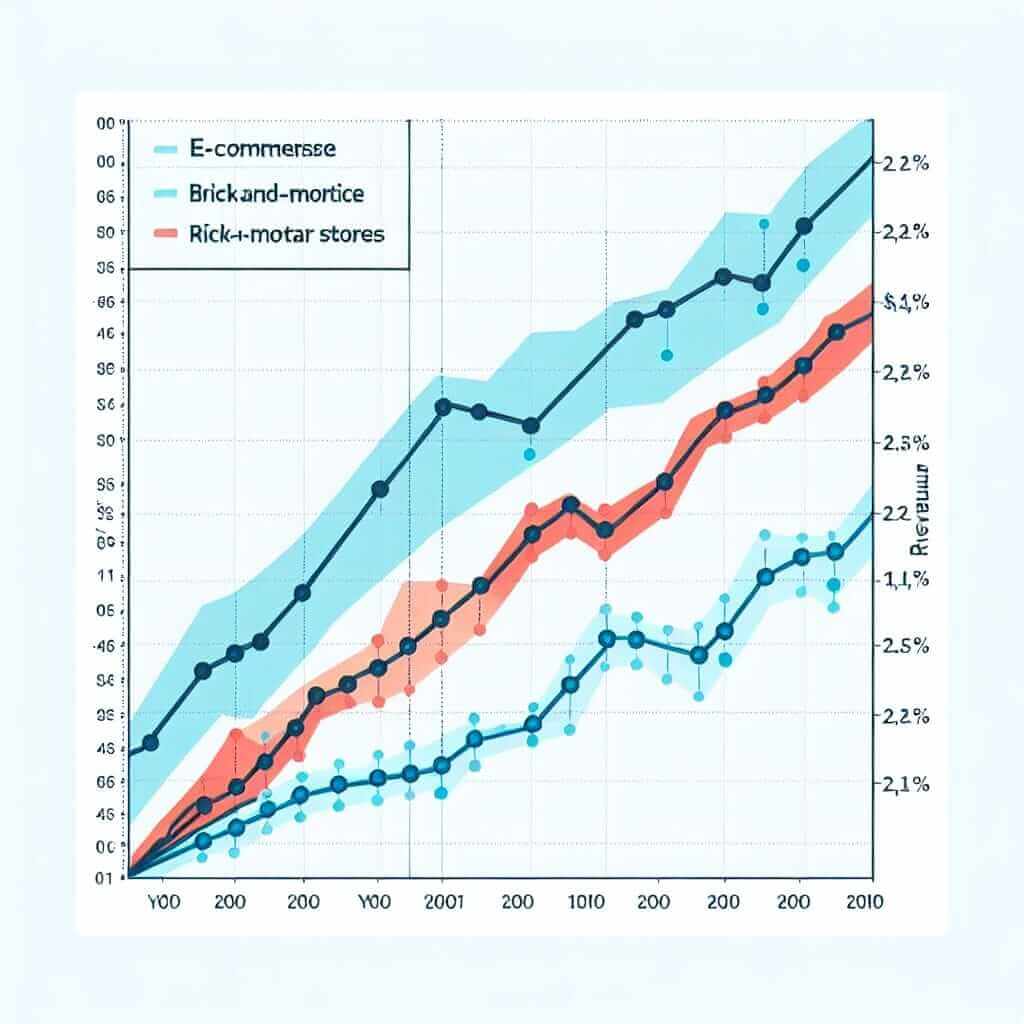The IELTS Reading section is known for its challenging texts that require precision and comprehension skills. One of the trending topics in recent years has been the impact of e-commerce on traditional brick-and-mortar stores. As we dive deeper into understanding this theme, it is imperative to recognize its significance and how it might appear in the IELTS Reading exam.
Relevance in IELTS Reading
With the rapid evolution of digital commerce, the transition and challenges faced by traditional retail stores are commonly discussed topics across various media. Historical data indicates a rising trend of such themes in IELTS reading passages, making it an essential area to focus on during your preparation. It’s plausible that similar topics may recur in future IELTS exams.
Main Content
Practice Reading Passage: Medium Text
The following passage simulates a typical IELTS Reading text centered around the impact of e-commerce on physical retail stores. This passage adheres to the format and difficulty of the IELTS Reading section.
The Evolution and Impact of E-commerce on Brick-and-Mortar Stores
E-commerce has revolutionized the way consumers shop, offering unprecedented convenience and a broad spectrum of choices. This digital transformation has reshaped traditional retail landscapes, compelling brick-and-mortar stores to reassess their strategies and adapt to the changing market dynamics.
The surge of e-commerce giants like Amazon has undeniably disrupted the retail sector. Physical stores, once the predominant shopping method, now face a significant decline in foot traffic. Many consumers prefer the ease of online shopping, where products are a click away and can be delivered to their doorstep. This shift in consumer behavior has led to numerous challenges for traditional retailers.
One prominent issue is the stringent competition from online platforms offering lower prices due to their reduced operational costs. Brick-and-mortar stores struggle to compete with the aggressive pricing strategies of e-commerce sites. Consequently, several well-established retail chains have had to shut down numerous outlets, unable to sustain the financial strain.
However, not all is bleak for physical stores. Many have embraced an omnichannel approach, integrating both online and offline strategies to enhance customer experience. By adopting digital tools such as in-store kiosks, mobile apps, and click-and-collect services, brick-and-mortar stores aim to bridge the gap between digital convenience and physical presence.
Moreover, experiential retail has gained traction, where stores offer unique in-store experiences that cannot be replicated online. This includes exclusive events, personalized services, and interactive displays, attracting customers and encouraging them to visit physical locations.
In conclusion, while the rise of e-commerce has introduced considerable challenges for brick-and-mortar stores, it has also spurred innovation and adaptation within the traditional retail sector. The future of retail will likely be a hybrid of digital and physical experiences, catering to the evolving preferences of modern consumers.
Practice Questions
Multiple Choice
-
What is the primary reason for the decline in foot traffic at brick-and-mortar stores?
a. Lack of convenient locations
b. Higher prices compared to online stores
c. The appeal of in-store experiences
d. The convenience of online shopping -
Which strategy are many brick-and-mortar stores adopting to compete with e-commerce?
a. Decreasing the number of physical stores
b. Increasing in-store prices
c. Offering click-and-collect services
d. Eliminating online presence
True/False/Not Given
-
Physical stores have no way to compete with the pricing strategies of e-commerce sites. (True/False/Not Given)
-
Experiential retail involves providing in-store experiences that cannot be replicated online. (True/False/Not Given)
Matching Information
-
Match the following descriptions with their corresponding concepts:
- A: Omnichannel approach
- B: Experiential retail
- C: Financial strain
i. Stores offering unique in-store experiences
ii. The integration of online and offline retail strategies
iii. Challenge faced by traditional stores due to competition with e-commerce
Short-Answer Questions
- What service allows customers to order online and pick up in-store?
- Name one digital tool mentioned that physical stores use to enhance customer experience.
Answer Key
- d
- c
- False
- True
- A-ii, B-i, C-iii
- Click-and-collect
- In-store kiosks or mobile apps
Common Mistakes and Tips
- Overlooking Keywords: Always pay attention to keywords in the questions and passage. It helps in locating the relevant information quickly.
- Time Management: Allocate your time wisely. Don’t spend too long on one question.
- Practice Matching Information: These questions can be tricky. Practicing more matching questions can help you improve.
Vocabulary
- Revolutionized (verb): rɛv.əˈluː.ʃən.aɪzd – to radically change something.
- Omnichannel (adj): ˈɑm.niˌtʃæn.əl – a seamless approach integrating multiple retail channels.
- Experiential (adj): ɪkˌspɪr.iˈen.ʃəl – relating to or resulting from experience.
Grammar Focus
- Complex Sentences: Often used in IELTS readings, complex sentences can make the text more engaging. Example: “While the rise of e-commerce has introduced considerable challenges, it has also spurred innovation and adaptation within the sector.”

Advice for High IELTS Reading Scores
- Regular Practice: Engage with diverse reading materials regularly, focusing on IELTS-style passages.
- Simulate Test Conditions: Practice under timed conditions to enhance your time management skills.
- Expand Vocabulary: Make a habit of learning and using new words.
- Understand Question Types: Familiarize yourself with different question types and develop strategies for each.
By combining these tips with the practice passage and questions provided, you can enrich your preparation process and aim for a high band score in your IELTS Reading section.